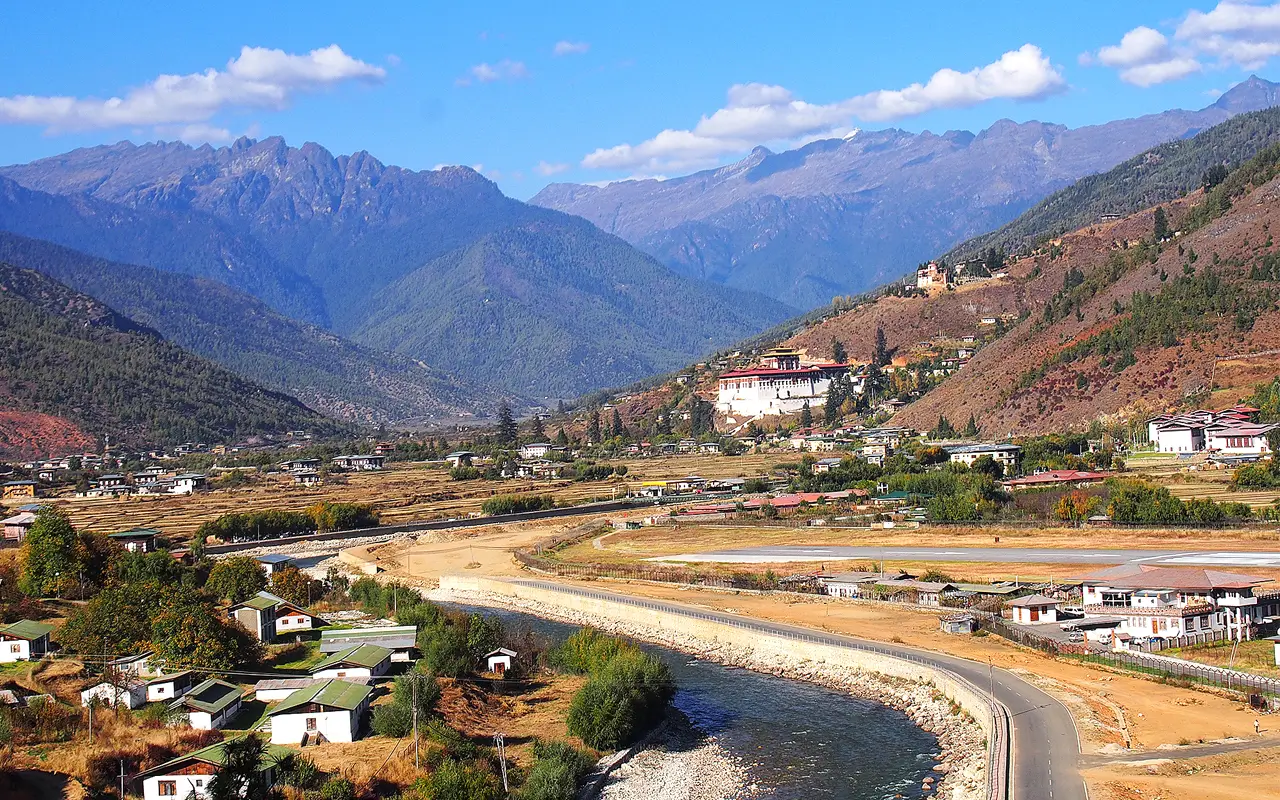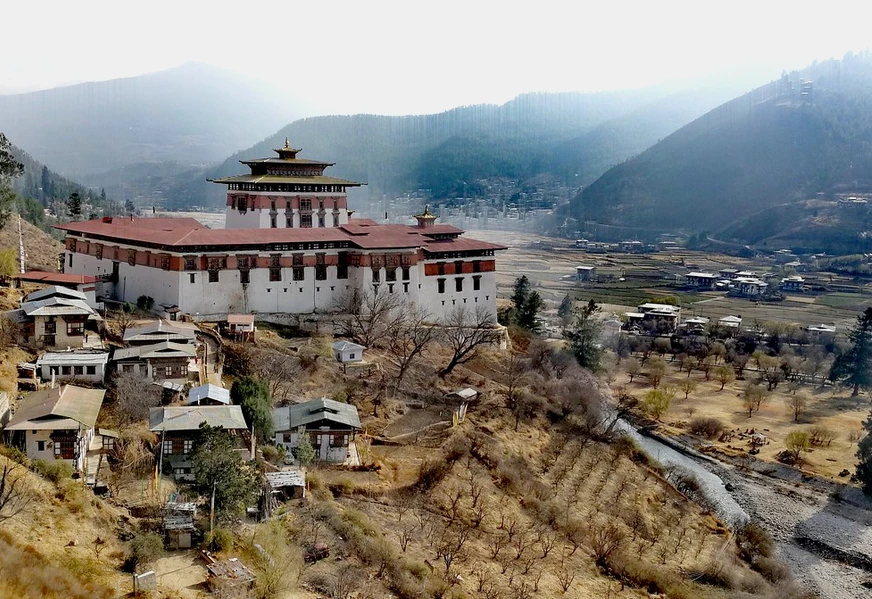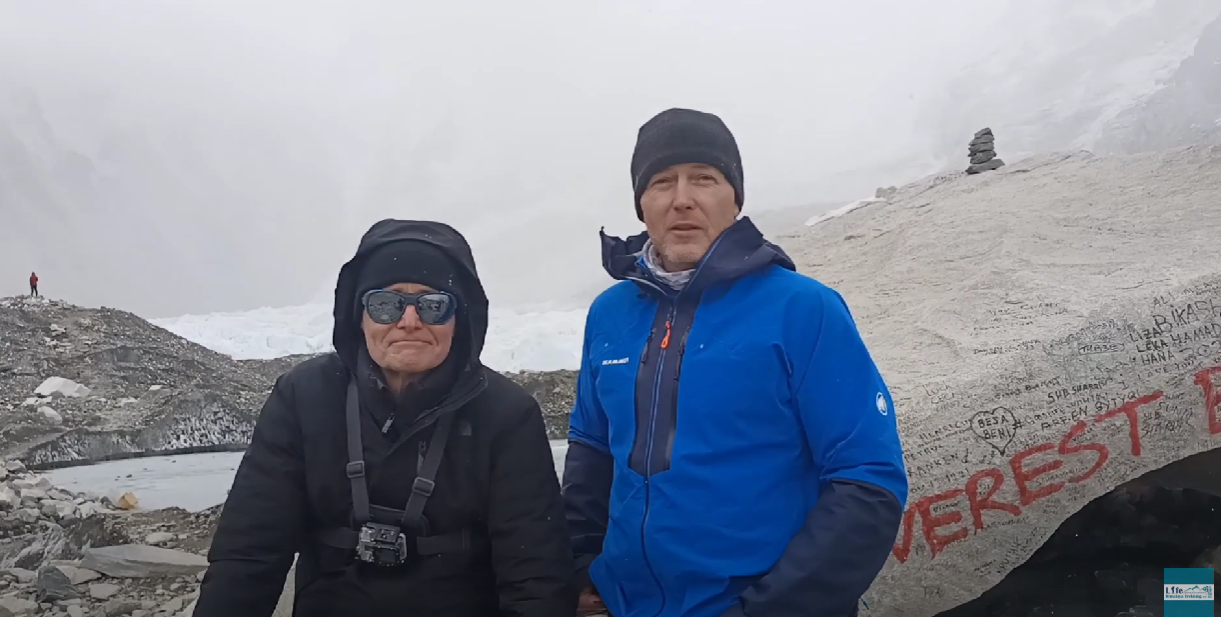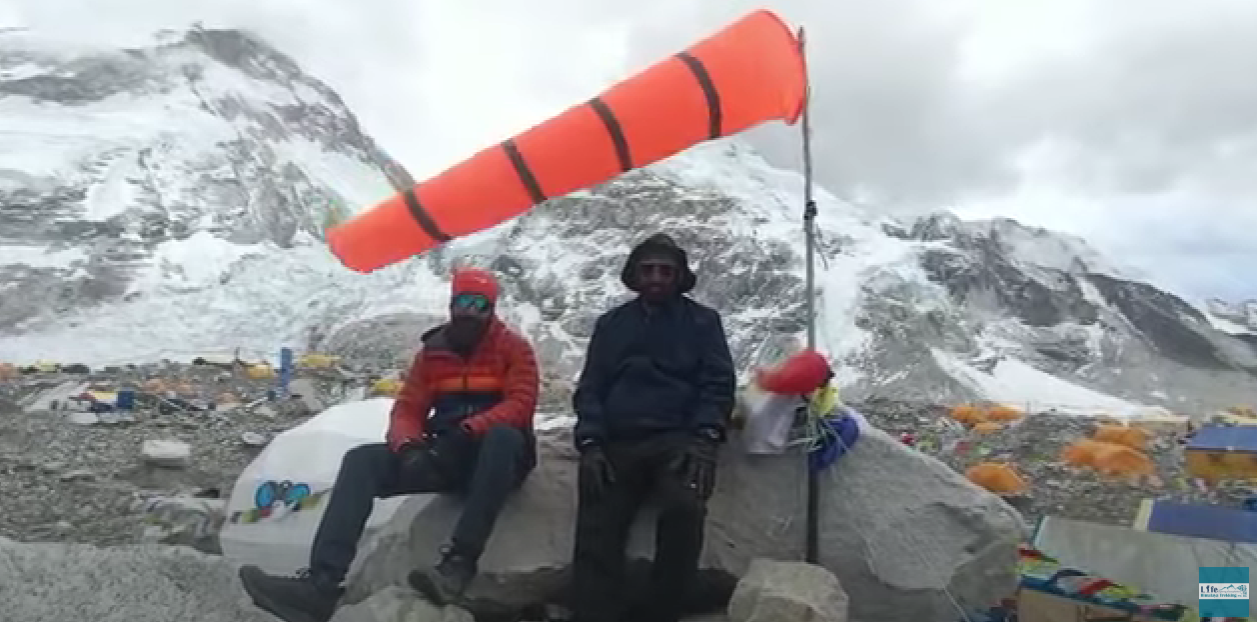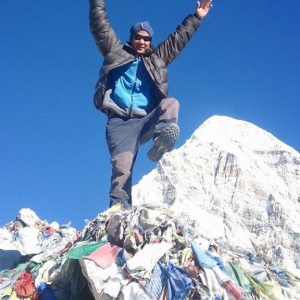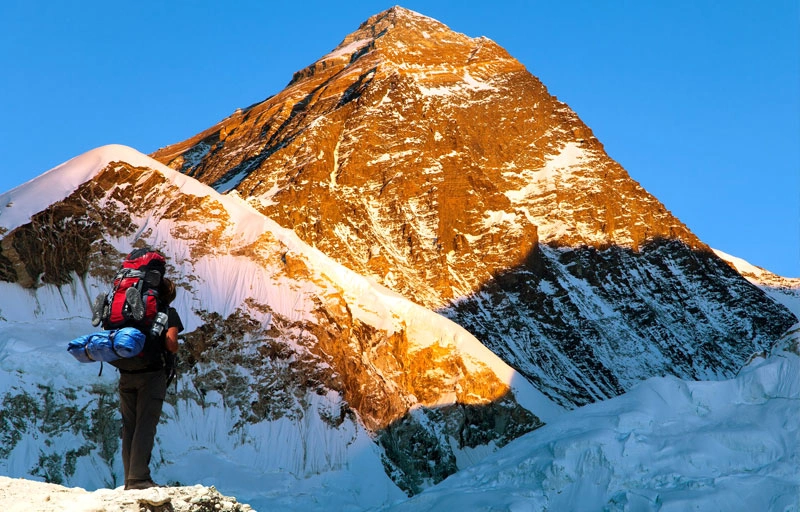Max. Altitude
3,120m
Best Season
Mar–May & Sep–Nov
Activity
Tours
Start / End Point
Paro/Paro
Overview of Bhutan Cultural Tour- 7 Days
The Bhutan Cultural Tour is one of the best ways to immerse yourself in Bhutan's breathtaking scenery, tranquil mountain living, and ancient, rich customs. One interesting fact about Bhutan is that it is frequently referred to as the world's happiest country due to its balanced lifestyle, deeply rooted values, and distinctive approach to national development.
Similarly, Bhutan is known to be the “Land of the Thunder Dragon” due to its past mythology as well as “The Last Shangri-La, “symbolizing it as a hidden paradise. This beautiful nation values its people and natural beauty, ensuring both are protected without compromise. Despite the rapidly changing world, Bhutan remains remarkably untouched.
This 7-day Bhutan cultural tour itinerary is appropriate for a wide range of visitors, including people with young children, senior citizens, nature enthusiasts, spiritual seekers, cultural explorers, couples, storytellers, and more. The criteria for this trip are that visitors must have basic fitness and good health to travel smoothly and comfortably.
Your Bhutan tour package comes into action when you land at the only international airstrip in Bhutan, Paro International Airport, surrounded by steep, majestic mountains as high as 5500 meters. In Paro City, you will explore some of the best places that this city has to offer, including the National Museum of Bhutan, Rinpung Dzong, Drukgyal Dzong (Bhutan Victory Fort), Kichu Lhakhang, etc.
The next day, you will drive to Bhutan’s beautiful capital and largest city, Thimphu, which is filled with prominent cultural sites and boasts a rich cultural heritage. You can be amazed by this city, as it is the only capital city on Earth without any traffic lights on its roads. Traffic police simply direct traffic, using hand signals at main intersections, which is just amazing to watch.
In Thimphu, you can visit the splendid Tashichho Dzong and explore vibrant markets and craft centers to experience the daily lives of local Bhutanese residents. Similarly, you can admire the giant Buddha Dordenma and travel to other attractions in the city, such as Radio Tower Viewpoint (Sangaygang View Point), Takin Preserve, Thimphu Dzong, King’s Memorial Chorten, and a few more.
Punakha is one of the significant highlights of this Bhutan travel guide journey, situated at an altitude of 1,250 meters above sea level. Here, you will have the opportunity to visit the Punakha Dzong, also called “The Palace of Great Happiness”. Similarly, other key attractions include Chimi Lhakhang, Dochu La Pass, Punakha River, and Metshina Village.
Additionally, you will also explore the serene and picture-perfect Gangtey Valley or Phobjikha Valley, situated in central Bhutan. It is also the winter home of the endangered black-necked cranes. This place is special due to its breathtaking scenery, iconic monastery, and authentic village life in Phobjikha.
Meanwhile, throughout this Bhutan Cultural Tour 7 Days, you will savour delicious traditional Bhutanese meals, meet kind-hearted locals, and visit ancient monasteries, creating countless lifetime memories in just one week. This tour is a great way to explore Bhutan to the fullest.
Life Himalaya Trekking will ensure that you have a great time in Bhutan, returning home with a wealth of unforgettable memories, by providing personalized services with top-notch security and professional guides. Therefore, don’t miss this rare opportunity and book a trip to Bhutan with us.
Highlights of Bhutan Cultural Tour- 7 Days
- Exploring Thimphu’s unique streets, where you will see no traffic lights, guided by local hand signals
- Visiting Tashichho Dzong and taking in the views at the giant Buddha Dordenma statue
- Shopping at vibrant craft markets and watching artisans practice Bhutan’s traditional crafts
- Driving over Dochula Pass for sweeping vistas of white snow-blanketed mountains
- Exploring Punakha Dzong, the “Palace of Great Happiness,” and the Chimi fertility shrine
- Observing rural life in Phobjikha Valley, home of black-necked cranes in winter
- Trying real Bhutanese cuisine and meeting pleasant people every step of the way
Bhutan Cultural Tour- 7 Days Itinerary
01
Day 01: Arrival in Paro
On the first day of your Bhutan Cultural Tour, your main goal is to arrive at Paro International Airport safely. This is Bhutan’s only international airport. When you arrive at the terminal, our friendly Bhutanese guide will greet you with a grin and hold a signboard with your name on it.
At the airport, your visa will be checked, as you must obtain it before arrival in Bhutan. Then, you will be escorted to your hotel in Paro City, where you can take a rest and take in the serene setting around it. Then, after some rest, you will begin your cultural trip in Paro city.
First, you will go to the Ta Dzong, a national museum that used to be a watchtower. This museum exhibits royal memorabilia, stamp collections, ancient Bhutanese antiques, thangka paintings, religious treasures, and statues. From here, you can take a short downhill walk that takes you to Rinpung Dzong, which is also called the “Fortress of the Heap of Jewels.”
After that, we will visit Kichu Lhakhang, one of the most revered and oldest temples in Bhutan. The roots of Bhutan’s spirituality and history are reflected in this temple. The Bhutan Cultural Tour of today ends with a visit to Drukgyal Dzong, where you can have a sensational view of the valley of Paro. Then go back to your hotel to get your first Bhutan night of sleep.
Maximum Altitude
2,200m
Accomodations
Hotel
02
Day 02: Drive Paro -Thimphu
Today, on the second day of your Bhutan travel guide journey, you will hike to the Tiger’s Nest Monastery (Paro Taktsang Monastery) after having a yummy breakfast. It is perched on a dramatic cliffside about 900 meters above Paro Valley. It will take about two to three hours uphill to reach the top while admiring the trekking experience.
There are some eateries around halfway up the walk to the monastery where you can relax if you become tired. You can drink tea or coffee with snacks while admiring the stunning views of Paro Valley. Upon reaching the top, you can explore the monastery’s several shrines and temples featuring sacred relics, ancient murals, and jaw-dropping views.
Moreover, don’t forget to visit the main sacred cave where Guru Rinpoche meditated in the 8th century. After exploring this beautiful monastery, you will start the downhill walk, which will take around one and a half to two hours. Then, you will drive to Thimphu City, the capital and largest city of Bhutan.
The drive to Thimphu city is very picturesque, as you will pass through terraced fields, dense jungles, and small settlements, accompanied by the breathtaking views of snow-capped mountains. After two hours of nonstop driving, you will reach the capital, where you will settle for the night on this 7-day Bhutan Cultural Tour itinerary.
Maximum Altitude
2,350m
Meals
B L D
Trek Duration
2 hrs
Accomodations
Hotel
03
Day 03: Explore Thimphu
Throughout the Thimphu City Tour of Bhutan, you will visit the leading places of interest. To have a full-day tour of Bhutan, you will first embark on a Bhutan Cultural Tour that starts from the hotel after breakfast. Thimphu is a place where one can enjoy an authentic experience while dealing with traditions and religious sites that serve as a strong foundation for the country.
The first leg of your journey starts at the National Memorial Chorten. It is a lovely white stupa built in memory of Bhutan’s third monarch. You will see sculptures and magnificent paintings that depict Bhutan’s spiritual tradition. Then you’ll visit Changangkha Lhakhang, a mountainside temple built in the 12th century, offering panoramic views.
Afterward, you will head to Zilukha Nunnery, which is a peaceful home to several Buddhist nuns. You will continue your sightseeing trip to the Institute for Zorig Chusum, where Bhutan’s 13 traditional arts and crafts are taught. You can also stop by the National Library to view ancient texts and scriptures.
Similarly, at the Folk Heritage Museum, you can explore a replica of a traditional Bhutanese farmhouse. Then you’ll go to the majestic Tashichho Dzong, a historic stronghold known for hosting the king’s office and other important government structures. If you have extra time, you may also visit the Motithang Takin Preserve to witness Bhutan’s national animal, the Takin, a cross between a cow and a goat.
This Bhutan Cultural Tour day can be concluded in the evening by meandering through the bustling Weekend Market. This market sells a wide variety of products, including handmade goods, traditional crafts, spices, and cheese. Then you can return to your hotel for some well-deserved rest.
Maximum Altitude
2,350m
Meals
B L D
Accomodations
Hotel
04
Day 04: Thimphu-Punakha
On this fourth day of your 7-day Bhutan cultural tour itinerary, you will leave the capital city of Bhutan behind and drive to Punakha City after having a substantial breakfast in the morning. The drive will be both thrilling and memorable, as you will be crossing the breathtaking Dochu La Pass at 3,100 m above sea level.
From Thimphu, you will get to the top of Dochu La Pass in approximately 45 minutes to 1 hour. The pass offers stunning views of the eastern Himalayas, where some of the highest peaks of Bhutan, such as Gangkar Puensum (7570 m), Masang Gang (7194 m), Teri Kang (7306 m), and Jejekangphu Gang (7100 m), can be seen.
On this pass, there are 108 memorial chortens (stupas) and the Druk Wangyal Lhakhang. Once we have had a brief stop here, we will move on to the tour going downhill through rich forests of oak, fir, hemlock, and rhododendron. On our trip, we will also have the opportunity to visit Metshina Village, which is famous because it is the starting point for a short walk through rice fields to get to Chimi Lhakhang (the Fertility Temple).
About two hours from the pass, we will arrive at the beautiful city of Punakha. Then, you will visit the remarkable Punakha Dzong, known as the “Palace of Great Happiness,” which was built in 1637. This stronghold sits at the confluence of the Mo Chhu (Mother River) and Pho Chhu (Father River). In the evening, we will settle into a cozy hotel to wrap up today’s exciting Bhutan Cultural Tour.
Maximum Altitude
3,100 m
Meals
B L D
Trek Duration
3 hours
Accomodations
Hotel
05
Day 05: Punakha-Gangtey-Punakha
On day 5 of the Bhutan travel guide, we will continue our trip to Gangtey after having a hearty breakfast in Punakha. After driving about 30 to 40 minutes from the hotel, we will make a brief stop at Wangduephodrang Dzong. It is a historic fortress perched atop a ridge, founded by Zhabdrung Ngawang Namgyal in 1638. It is also the 3rd dzong that was built in Bhutan.
Then, after exploring this iconic dzong, we will set off on a scenic drive to Gangtey, passing through lush jungles of blooming rhododendrons and oak. As you drive higher into the mountains, you will see the valley open into two distinct parts: Phobjikha Valley in the lower region and Gangtey in the upper area.
After reaching Gangtey, you will visit the iconic Gangtey Monastery, founded in 1613. It has a bustling Gangtey festival every year, which is a rewarding experience to witness if you happen to be in Bhutan at this time of year. Gangtey will also show you breathtaking views of the Phobjikha Valley’s ice-capped peaks, undulating hills, and vast open spaces.
Similarly, this glacial valley is the nesting ground for a special species of black-necked cranes, which migrate to this area from the Tibetan Plateau (encompassing northern Tibet and western China) every winter, from late October to February. You can also go to the Crane Information Center to find out what the local people are doing for conservation and the importance of saving these pretty birds.
After exploring the peaceful Gangtey in the evening, you will drive back to Punakha, following the beautiful mountain road you took earlier. The day after the tour package, you will return to Paro to complete your Bhutan Cultural Tour adventure.
Maximum Altitude
2,900m
Meals
B L D
Trek Duration
3-4 hrs
Accomodations
Hotel
06
Day 06: Punakha-Paro
Today, you will be returning to Paro City from Punakha after having a mouth-devouring first meal of the day in your hotel. During the return travel, you will again pass through the thrilling Dochu La Pass, where you will stop for a brief time to visit the iconic Druk Wangyal Lhakhang.
It is situated just above the 108 Druk Wangyal Stupas, surrounded by verdant forest and snow-topped mountain peaks. You can see the interior, featuring lively and whimsical murals that blend modern Bhutanese history with traditional religious themes. At this temple, the Dochula Druk Wangyal Festival is held annually on 13 December, showcasing beautiful performances and masked dances by royal army troops and monks.
After that, you drive and complete your trip. In the evening, you can visit a village house and interact with the locals while witnessing and engaging in their everyday life, delivering a real experience. You will spend the last night in Bhutan on this Bhutan Cultural Tour 7 Days adventure.
Maximum Altitude
2,200
Meals
B L D
Trek Duration
4 hrs
Accomodations
Hotel
07
Day 07: Depart Paro
After an early breakfast, you will be transferred to Paro International Airport (PBH) for your flight home. Generally, flights in Bhutan depart in the morning, so you need to get ready early and prepare for the flight.
Our Life Himalaya Trekking team will be with you at the airport to say a final goodbye. We hope you reach your home safely and share your travel experience in Bhutan in our company’s website review section so that we can improve our services even better.
Meals
Breakfast
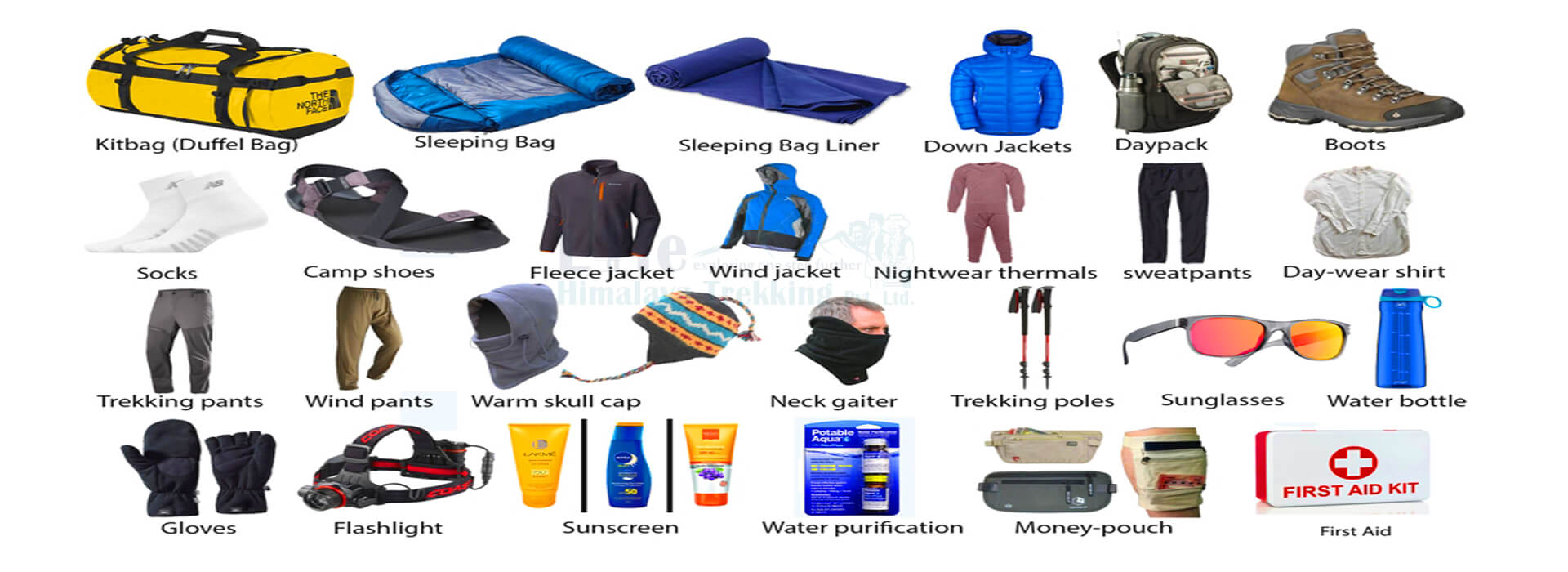

Required Equipments for Trekking in Nepal
- Breathable Underwear
- Sports Bra
- Base Layers
- Trekking Shirts
- Trekking Trousers and Shorts
- Fleece Jacket
- Down jacket (insulated jacket)
- Windcheater (water proof)
- Sun protection Hat
- Headband or Beanie
- Scarf or neckband
- Gloves (inner and outer )
- Hiking Boots
- Trekking Shoes
- Hiking Socks
- Thermal Socks
- Gaiters
- Duffel Bag
- Day pack
- Sleeping Bag
- Trekking poles
- Sunglasses
- Hydration bladder or Water bottle
- Head Lamps
- Batteries
- Personal towel
- Swiss army knife
- Sun lotion
- Medical & first-aid kit
- Woolen socks
- Waterproof jacket
- Lip Guard
- Insulated pants
- Baby wipers
Required Equipments for Climbing in Nepal
- Water bottle
- Batteries and bulbs
- Flashlight
- Personal towel
- Swiss army knife
- Rucksack
- Sun lotion
- Medical & first-aid kit
- Sewing kit
- Polypropylene/wool socks
- Other required equipment
- Sleeping bag
- Down Jacket
- Waterproof jacket
- Trekking shoes/boots
- Camp shoes
- Jumperorpile jacket
- Hiking pants
- Hiking shirts
- Full–sleeves shirt
- T-shirts
- Sun hat
- Gloves
- Woolen hat
- Long underwear
- Goggles or sun glasses
- Gaiters
- Sun block for lips
- Light cotton socks
- Mountain trekking boots
- Woolen socks to wear with boots
- Nylon wind breaker
- Insulated pants
- Nylon wind pants
- Long sleeved cotton/woolen shirts
- Sun hat
- Long cotton hiking shorts
- Fleece/wool for climbing
- Lightweight fleece
- Sleeping pad (karri mat) or thermarest
- Down high altitude sleeping bag
- Down jacket/trousers/vest
- Light cotton athletic socks and wool socks
- Water proof climbing jacket
- Head torch/batteries/bulbs
- Climbing sunglasses
- Lightweight thermal/insulated ski gloves
- Sun screen
- Warm climbing trousers
- Wool long underwear
- Other required equipment
- Climbing boots
- Gaiters
- Ice axe
- Harness
- Crampons
- Karabiners
- Tapes/slings
- Snow bars
- Ice screws
- Rock pegs
- Deadmen
- Crash hat
- Day bag
- Rucksack
- Lip salve
- T-shirts
- Ascenders
- Ascenders
- Kit bag
Bhutan Cultural Tour- 7 Days Trip Information
a)Best Time
During a 7-day Bhutan cultural tour itinerary, choosing the right season is key to having a meaningful experience. Bhutan, with its ancient lamaseries, dramatic valleys, and rich traditions, changes beautifully with the seasons. Whether you’re visiting for spiritual discovery, scenic hikes, or cultural immersion, each time of year brings something special with its own peculiar charm.
Spring Season
Spring is one of the best time for a Bhutan cultural tour. The valleys bloom with colorful rhododendrons, and temperatures are mild, typically between ten and twenty degrees Celsius. Blue skies are ideal for touring prominent places such as Paro Taktsang and Punakha Dzong.
You will witness festivities such as vibrant disguised dances, colorful traditional costumes, holy rituals, and joyful celebrations that are major highlights during your visit to the Paro Tshechu heritage.
Although this season does attract more visitors, the atmosphere remains relatively calm compared to autumn. When booking a trip package for Bhutan in the spring, it is best to make your reservations as soon as possible to ensure great lodgings.
This nation has still safeguarded and honored its cultures, history, and traditions, even as it took its steps into modernization, where people can see a variety of distinctive costumes that are hard to take their eyes off because they are unique as well as beautiful. Even school uniforms are a traditional national outfit in Bhutan.
Summer Season
Summer brings lush greenery and dramatic mountain mists, but it also means frequent rain. Traveling can be hampered due to murky roads, airplane delays, and obscured views, making the time of year unsuitable for trekking. Yet this tour itinerary focused on relaxation and spiritual sites; summer can still be a suitable time.
Only a limited number of tourists travel during this season as it brings rain and trails can be muddy, making it hard to travel, but yet it’s beautiful in its own way. After rain, the environment and sceneries, which were dusty before, will be dust-free, making it excellent for photography with a serene, soothing ambiance, and admiring the natural beauty. Just remember to pack waterproof clothing while keeping your schedule flexible.
Autumn Season
Autumn is also the best season for this tour. With cool temperatures and clear, cloudless blue skies, it’s perfect for both sightseeing and light trekking. Celebrations like Thimphu Tshechu draw visitors and residents together to celebrate, making it an ideal opportunity for anyone looking for a deeper cultural experience and to interact with the locals.
However, this popularity comes with crowds and higher travel costs. Even seasoned explorers are taken by surprise here, as this time has cloudless blue skies, stunning views, crisp air, and festive energy, which makes this season rewarding. That’s why trails are way more crowded than in other seasons.
Winter Season
Winter offers a peaceful, off-season Bhutan tour package experience. Even though it’s the cold season, the valleys remain sunny and cool, perfect for visiting temples, lamaseries, ancient dzongs, and quiet local lifestyle villages. At the same time, festivals like Thimphu offer a more intimate peek into Bhutanese cultural transmission.
That said, some mountain passes may close due to snow, limiting access to higher regions. While it’s not ideal for trekking, if you are a solivagant traveler, it’s an excellent time for reflection, slow travel, and immersing oneself in the calm rhythm of Bhutanese life.
b) Elevation and distance
On this 7-day Bhutan cultural tour itinerary, you will begin your trip in Paro, situated at an elevation of 2,200 meters (7,200 feet). The next day, you will hike up toward the Tiger’s Nest Monastery (Paro Taktsang), which is situated at an altitude of 3120 meters (10236 feet) above sea level.
Similarly, when you are in Thimphu, you will be at an elevation of 2,350 meters (7,710 feet). In Punakha and Gangtey, you will be at altitudes of approximately 1,250 meters (4,100 feet) and 2,900 meters (9,514 feet), respectively. The highest point on this Bhutan tour is Dochu La Pass, located at 3,100 meters (10,170 feet), offering the best panoramic views that one can expect.
In this Bhutan travel guide, you will be traveling in a vehicle around a total distance of 430 kilometers, or 267 miles, in one week. On the other hand, you will drive in a car approximately 85 kilometers one way when traveling to Gangtey Valley from Punakha City.
c) Maximum and minimum drive per day
On this 7-day Bhutan cultural tour itinerary, you will drive an average of 3 hours regularly when traveling to different destinations in Bhutan. Your minimum drive per day will be about two hours only on the second day when you drive to the capital city of Bhutan, Thimphu, from Paro City.
In the same way, the maximum drive per day will be about four hours when you return to Paro City from Punakha on the sixth day. You will ride in a comfortable, private vehicle, ensuring your safety.
d) Accommodation, Food and Drink
If you want to join the Bhutan Cultural Package with Life Himalaya Trekking. With this scenario, you’re in for a pleasant, archaeologically rich getaway, particularly in terms of lodging, food, and local beverages.
Throughout the trip, you’ll be staying in government-approved hotels in Categories A and B, which are selected based on comfort, cleanliness, and location. These hotels typically offer twin-sharing accommodations, featuring cozy rooms with basic amenities, warm hospitality, and a great introduction to the fusion of both modern and Bhutanese architecture and culture.
Especially when it comes to a meal, you won’t go hungry. This Bhutan sightseeing tour covers each meal, tea, and snack, allowing you to enjoy full-board accommodations, with breakfast and dinner supplied at your lodging facility.
At the same time, lunch is arranged at select local restaurants during your travel days. Expect to be introduced to traditional Bhutanese flavors in a cultural ambiance.
Interestingly, the most popular meals include Ema Datshi (a chili and cheese dish), Phaksha Paa (pork with red chilies), Jasha Maru (a spicy chicken stew), and Shakam Paa (dried beef with radish).
If you’re not sure what to taste, the staff or the tour guide will usually suggest something depending on what you prefer, which is hotter and more aromatic than Western food.
Food and beverages are also served during daily activities, keeping you refreshed throughout your tour. That said, beverages are not included in the package, so you’ll need to pay for them on your own. Still, this gives you the opportunity to explore Bhutan’s fascinating drink culture.
Classical beverages that are worthwhile include Suja (butter tea), Ara (a locally brewed spirit), Ngaja (milk tea), and even Bumthang wheat wine. It is often unique to specific locations and provides a better insight into the Bhutanese residents’ way of life.
With Life Himalaya Trekking taking care of your meals and stay, all you need to do is enjoy the journey. The combination of comfortable lodging, delicious local meals, and the chance to taste authentic Bhutanese drinks makes this cultural trip both flavorful and unforgettable.
e) A typical Day in the Bhutan Tour
A typical day on your Bhutan cultural tour begins with a peaceful breakfast overlooking misty valleys or sunlit mountains. By mid-morning, you will tour the oldest and most spiritual dzongs, such as the Paro Fortress Dzong, or visit a centuries-old temple, and hear the stories of Bhutan’s historical and spiritual legacy.
Perhaps you hike along trails that are perfumed by the fragrance of pine trees to be at the monasteries where you are the only visitors, or just wander through the village where the paths are covered with prayer flags. Besides, you will notice the farmers growing the plants in the fields and the locals who are walking about and spinning prayer wheels on the way.
Lunch is usually served at a local restaurant or a beautiful location, offering some authentic Bhutanese flavors. In the afternoon, you can either go to the museum, watch the local artisans as they demonstrate their crafts, or spend time at local markets.
As the day comes to an end, before returning to your hotel, you will have the opportunity to visit a traditional farmhouse and interact with the locals.
You may also be lucky enough to try a local brew made from rice or wheat. Quiet and peaceful evenings are ideal for meditation or stargazing, with no one else in sight except the magnificent Bhutan landscapes.
f) Who can join this 7-day Bhutan Cultural Tour?
If you have ever dreamed of wandering through historical streets, this Bhutan cultural tour can be ideal for you, as it is designed for international travelers looking for rich, vibrant heritage, spiritual depth, and stunning natural beauty in this nation.
This sightseeing tour is suitable for people of all ages, including individuals, couples, groups of friends, and elderly individuals interested in exploring Bhutan’s customs and monastic traditions that have been passed down and preserved through many generations.
Whether you’re going alone or with friends, a culture buff or a mindful traveler, this tour welcomes anyone who is curious about and admires the rich cultural history of the last surviving Himalayan kingdom.
All visitors are required to book through a certified Bhutanese travel operator, as per Bhutan’s well-organized tourism regulations, which will also help smooth the tour.
Travelers who know how to stay disciplined and adhere to all rules and regulations while touring the area can join the Bhutan tour package without any violations, resulting in increased safety and a deeper understanding of the history. This makes it feel like more than just a location; it’s an experience that is more memorable and respectful.
This trip is not physically strenuous, but it does require considerable trekking, particularly while visiting spiritual landmarks such as Paro Taktsang (Tiger’s Nest Monastery), which is perched high on a steep cliff. Before visiting, consider whether you will be accompanied by elderly people, as there is no carriage service available in that area.
This tour is optimal for those who appreciate thoughtful travel, respect local traditions, and enjoy tranquil surroundings. Each day reveals a blend of history, architecture, and spirituality, offering a journey that enriches both the soul and the senses. Where every stone and sculpture here tells a story, and every breeze whispers history.
g) Preparation and fitness
On this Bhutan Cultural Tour, you should have at least a basic level of fitness, as most cultural tours in Bhutan involve walking on uneven terrain, climbing many stairs at dzongs (fortresses), and some short hikes.
As Tiger’s Nest Monastery also falls in the itinerary of this package, you can prepare by focusing on leg-strengthening and cardio exercise by involving activities like stair climbing, cycling, swimming, and so on.
Basic fitness will also help you greatly when visiting high-elevation locations like Dochula Pass and Gangtey to adapt your body to the increasing height.
Another vital part of preparation is packing comfortable clothes, shoes, and gear, which will enhance your traveling experience during the 7-day Bhutan Cultural Tour itinerary.
h) Gadgets charging and Internet
Rest assured that you can stay connected during your Bhutan Cultural Tour in most towns and tourist destinations, where internet connection is generally strong.
Upon arrival at airports or in local stores, and provided with your passport, you can purchase a local SIM card. Three major providers promise 4G and 5G network coverage in towns like Paro, Thimphu, and Punakha.
While it’s true that many parts of the country may have low signal strength, the main tourist sites are well-connected. Wi-Fi is regularly available at most hotels, guesthouses, and select coffee shops, allowing you to easily stay connected with your loved ones or share information about local attractions and dining options during your Bhutan Cultural Tour.
Additionally, many hotels offer charging stations, either free of charge or upon request, and provide universal adapters for your devices, which means there is no need to panic if your gadgets suddenly run out of battery.
If nothing is provided, it is wise to have a travel adapter with you. Bhutan is progressively reshaping its tradition of comfort and services by incorporating modern facilities, allowing for a smooth travel experience without stress.
i) Travel Permits and Regulations
Once you are part of a Bhutan cultural tour, the customary regulations of the country are to be kept by the tourists, which are aimed at keeping the heritage and the environment as they are.
To get to Bhutan, one must be in possession of a visa, and, in some cases, there are additional permits that he/she needs, like in the case of the Tiger’s Nest Monastery, which is a protected site and is so famous in Bhutan.
In a nutshell, the low-impact model of tourism adopted by Bhutan implies some revenue through the amount paid by tourists to the government and local communities as a measure of control of the people going to the area, and also as an assurance to the governing council that the people will receive some benefits from the government. This is particularly important not just for the people but also for the environment.
Guests of Bhutan must be aware that they should adhere to local traditions, dress appropriately when entering holy places, and remember to be eco-friendly. This way, you will not only be part of a more meaningful Bhutan cultural tour but also save the country from cultural and natural destruction.
j) Travel Insurance in Bhutan Tour
Whether you are traveling internationally or domestically, having proper travel insurance while you are on the move is a must, which will make you feel free of worrying about trivial matters and major problems that may arise during the trip, such as flight cancellations, lost personal belongings, theft, and others.
Similarly, a comprehensive travel insurance policy that will be helpful while you are traveling includes emergency assistance and health care services, which can be useful when something goes wrong, as you cannot predict the future or what may happen. It can protect you from these situations, as it will cover your expenses in those cases too.
Think of it as your backup buddy in this Bhutan Cultural tour, which will support you if something goes wrong. Additionally, don’t hastily choose any policy because selecting a policy wisely can be helpful and compatible for you in this 7-day Bhutan cultural tour itinerary.
You will travel to a moderately physically demanding place called Tiger’s Nest Monastery, where, if you are traveling with elderly people and something unfortunate happens, it will be beneficial. Sometimes, it can be your lifesaver. If you are an international traveler, it is highly recommended. Though it is not included in the package, you have to arrange it by paying separately for this policy.
k) What to expect from this Bhutan Cultural Tour?
The 7-day Bhutan Cultural Tour is a trip worth experiencing, as it takes you on a rejuvenating journey across a nation that is among the world’s most peaceful and culturally preserved places. You begin with Paro, where local architecture and sacred sites, such as Rinpung Dzong and the National Museum, allow you to feel the spiritual connection of Bhutan.
Thimphu offers local markets and the gigantic Buddha Dordenma, and is a place where traffic lights are not found, respecting the environment. Then, you move to Punakha, which is home to the exciting Punakha Dzong, small villages, and the stunning view from Dochula Pass.
In Gangtey (Phobjikha Valley), you can experience peace with nature and appreciate the simplicity of the almost untouched Bhutanese countryside, with highlights including the sight of black-necked cranes flying and the veneration of the old monasteries’ woods and valleys.
Be a part of the tour and experience the people’s warmth, taste Bhutan’s dishes, and see how the Bhutanese live “a very unique way of life where people remain joyful, contented, and satisfied.” It is a destination for all kinds of tourists, as it promises families, couples, cultural enthusiasts, and nature lovers to connect with a place deeply rooted in traditional values, where calmness is a natural part of everyday life.
l) Packing lists for the Bhutan cultural tour
Before embarking on your 7-day Bhutan cultural tour, our company, Life Himalaya Trekking, will provide you with a comprehensive packing list for this tour, which will significantly enhance your travel experience. The correct packing will prepare you for any obstacles you may face during this trip, such as rain, extreme heat, and other unusual circumstances. The following are the packing lists:
Clothing: When traveling anywhere in the world, clothing is the most vital aspect that can directly impact your travel experience, which may be positive or negative. Some of the essential clothing items to pack for this Bhutan Cultural Tour include layered clothing, a warm jacket, long-sleeved shirts, comfortable trousers, hiking pants, and a waterproof outer layer.
Gear: Furthermore, another factor that may also ease your journey is having the right gear with you. Gear can alleviate the strain on your body and improve your comfort, particularly if it involves long walks and a lot of hiking.
The absolutely essential gear that you would need to be smart about when you are planning a Bhutan cultural tour is a backpack, sun protection, a water bottle, a power bank, binoculars, personal hygiene items, personal medications, and a first-aid kit.
FAQs For Bhutan Cultural Tour- 7 Days
What are the top highlights of the Bhutan Cultural Tour?
On this 7-day Bhutan cultural tour itinerary, you will explore four significant places: Thimphu, Paro, Gangtey, and Punakha. The must-see spots include Chimi Lhakhang, the Tiger’s Nest Monastery, Dochula Pass, Punakha Dzong, and a few more, offering you scenic vistas and a glimpse of rich Bhutanese culture.
When is a good time to embark on the Bhutan travel guide?
The best time to travel to Bhutan is primarily from March to May, corresponding to the spring season, and from September to November, corresponding to the fall or autumn season. You will experience the pleasant weather and clear views, which are perfect for trekking, sightseeing, and enjoying colorful festivals like the Thimphu Tshechu.
Can I plan my group trip to Bhutan?
Obviously, you can. If you are visiting Bhutan with your peers or family, you can create a custom Bhutan group trip. However, you will need to plan with a travel expert to tailor the trip to your interests and preferences. Without a licensed Bhutanese travel agency, you cannot travel with anybody, whether it is a friend or family member.
What type of clothing should I wear on this Bhutan tour package adventure?
You should wear light, long-sleeved clothes to protect against the intense sun. Don’t forget to carry sunscreen and a hat, and stay hydrated with fruits and water. Similarly, wear comfortable shoes for short treks and walks during sightseeing.
Are there any rules I should be aware of during the Bhutan Cultural Tours 7 Days adventure?
Of course. The most important rule is to be respectful of local customs and their culture. Additionally, be mindful of your attire. You are required to dress modestly at religious sites and adhere to local government regulations. When traveling, it’s also a good idea to ask your guide about any local rules, particularly when entering monasteries and temple areas.
Why should I choose this 7-day Bhutan travel guide?
It is the best mix of culture and nature that offers a one-of-a-kind experience in Bhutan. From Himalayan views to sacred hikes and savoring delicious Bhutanese cuisine, this tour will give you a genuine taste of Bhutan, leaving you with wonderful memories that will last a lifetime.
Will I require a visa for the 7-day Bhutan cultural tour itinerary?
Yes, most travelers require a visa to travel to the beautiful country of Bhutan. Your tour operator will arrange a visa. Our company, Life Himalaya Trekking, also manages all the visa and accommodation services in such a way that you don’t have to worry. So, book with us for a trouble-free adventure in Bhutan.
Can I extend my Bhutan tour package?
Yes, you can, without a doubt. You simply need to do one thing: inform your travel planner in advance. However, you will need additional visa days for a longer stay to explore Bhutan’s beauty fully.
Are 7 days enough to enjoy Bhutan’s culture and natural beauty?
The correct answer is yes. A week is enough to see Bhutan’s top sights and experience its peaceful nature and rich cultural norms and values. The Bhutan Cultural Tours 7 Days adventure is a well-balanced trip, giving you the whole course of experience that you expect.
What is the cost of a 7-day Bhutan tour package?
The cost extends from $250 to $300 USD per individual per day, which includes accommodations, transportation, a guide, meals, and regular tourism fees until you arrive in Bhutan. Nonetheless, prices can vary depending on the group size, season, and type of accommodation selected.
Can I customize the Bhutan tour to fit my interests?
Absolutely! You are free to tailor this 7-day trip focusing on nature, culture, and adventure. All you have to do is let your tour planner know, and everything will be arranged to fit your interests.
Do I need travel insurance for the Bhutan Cultural Tour?
Having travel insurance is the top priority when traveling to any country in the world. Even though it is not always required, it helps you safeguard against any sort of emergency, including unexpected events, trip cancellations, and medical issues.
What payment methods and currency are used in Bhutan?
Typically, paying in cash is the preferred method for all types of payments. However, in cities, large hotels will usually accept credit cards. The currency used in Bhutan is the Ngultrum (BTN). 1 USD is nearly equal to 87 Bhutanese Ngultrum.
How can I stay connected throughout the entire 7-day Bhutan cultural tour itinerary?
You can remain connected by purchasing a local SIM card upon arrival at Paro International Airport.
How good are the medical facilities in Bhutan?
In Bhutan, you will find better hospitals in Thimphu and basic medical care in major towns like Punakha and Paro. If you have any prescriptions from your doctor, it would be wise to bring them with you from home. Similarly, remote areas and villages often have limited services, so travel insurance can be a valuable asset if needed.
What should I keep in mind when planning a family trip to Bhutan?
If you plan to visit Bhutan with your family, consider choosing activities suitable for all ages, such as cultural visits, easy hikes, and craft workshops. You can allocate a rest day to balance the busy touring days for the elderly and kids, ensuring comfortable travel.
Can I stay at a homestay or a farmhouse during my Bhutan Cultural Tours 7 Days?
Yes! You can stay with local families, which allows you to experience authentic Bhutanese life and enjoy home-cooked meals, enabling you to connect closely with their culture.
Video Reviews
Tripadvisor Reviews
Google Reviews
Similar Trips
Join us on similar trips in the same region



